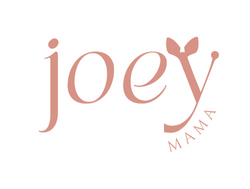Babywearing is an incredibly popular choice for many parents, and it’s easy to see why. Using a baby wrap carrier not only keeps your baby close but also gives you the freedom to move around hands-free (yay). Whether you’re navigating the aisles of the supermarket, taking a stroll, or simply trying to get things done around the house, babywearing offers a convenient and comforting way to carry your little one.
If you’re considering babywearing, here’s a quick guide to help you make the most of using a baby wrap carrier and get you started on your babywearing journey!
Benefits of Babywearing
1. Closeness and Bonding
Keeping your baby close to you strengthens the bond between you and your child. Babywearing helps your little one feel safe and secure, surrounded by your warmth and heartbeat, which can be especially soothing for newborns who are going through the Fourth Trimester.
2. Hands-Free Convenience
Life with a baby can be busy, and sometimes you need your hands free. A wrap carrier allows you to go about your day with ease, whether you’re folding washing, taking a walk, or doing school drop off.
3. Soothing for Baby
Many babies feel more relaxed when worn close to their parents, which can help reduce crying and fussiness. The gentle motion and constant contact are reminders of the womb, creating a familiar and comforting environment.
4. Promotes Healthy Hip Development
Following Australian babywearing guidelines and ensuring the correct positioning in the wrap carrier can support healthy hip development. Carriers, when used correctly, can help position your baby’s hips in the “M” shape, with their knees higher than their bottom, supporting healthy hip development as they grow.
5. Encourages Physical and Cognitive Development
Being upright and close to mum or dad, exposes your baby to new sounds, sights, and smells. The stimulation they receive in a wrap carrier helps encourage both physical and cognitive development, as they observe the world around them from a safe place.
Tips and Tricks for Babywearing with a Wrap Carrier
1. Practice Wrapping Beforehand
Before putting your baby in the carrier for the first time, it can be helpful to practice wrapping the carrier by yourself or with a doll. Familiarise yourself with the steps, especially the position of the wrap around your waist and shoulders, so you feel comfortable and confident when carrying your baby.
2. Follow the “T.I.C.K.S” Safety Checklist
The T.I.C.K.S. rule is widely recommended for safe babywearing. Here’s what each letter stands for:
- Tight: The wrap should be snug to provide support and prevent slumping.
- In view at all times: Your baby’s face should always be visible, and they should never be buried in fabric.
- Close enough to kiss: You should be able to kiss your baby’s forehead easily.
- Keep chin off the chest: Ensure there’s enough space to avoid restricting their airway.
- Supported back: The wrap should support your baby’s back in a natural curve, preventing slumping.
3. Positioning Matters
Always position your baby in an “M” shape, with knees higher than their bottom. This position not only provides comfort but also supports healthy hip development. Australian health guidelines encourage the “frog-leg” position to support a baby’s natural hip development.
4. Dress Your Baby Appropriately
When babywearing, it’s best to avoid bulky clothing. Dress your baby in light layers, as the wrap and your body heat will keep them warm. In warmer weather, stick to a light onesie and consider using a sun hat if you’re outdoors. In cooler months, add a light jacket or blanket over the wrap if needed.
Common Babywearing Questions
How Long Can I Wear My Baby in a Wrap Carrier?
There’s no set time limit, but it’s important to listen to your baby and your body. As long as your baby is comfortable, positioned correctly, and you’re not experiencing any strain, you can wear them as long as you both like.
Can I Wear My Baby on My Back in a Wrap Carrier?
Our wrap carriers are designed for chest carrying only, for facing inwards.
What If My Baby Falls Asleep in the Carrier?
Many babies fall asleep in carriers, which is one of the joys of babywearing! Just make sure they’re securely supported, with their airway clear, and that you keep following the T.I.C.K.S. guidelines. Also best to support their heads and necks with the shoulder pass material.
Embrace the Babywearing Journey
Babywearing is more than just a practical tool – it’s a way to connect and share experiences with your baby, all while navigating the day-to-day. By following these tips and practising safe babywearing techniques, you’re setting yourself up for a wonderful experience with your little one.
So, enjoy those sweet moments, the gentle cuddles, and the closeness that babywearing brings. Your baby will love being right there with you, and you’ll have the freedom to go about your day knowing they’re safe, secure, and content. Happy babywearing!




Leave a comment